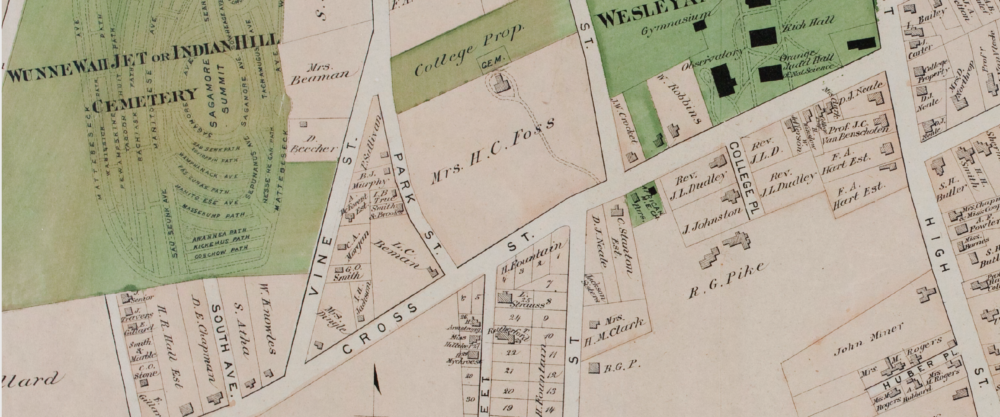The Wesleyan Connection newsletter recently featured images from a Beman Triangle talk at the Russell library. Sarah Croucher, Amy Cao (’15) and Sarah Chrystler (’13) spoke about recent archaeological research and the process of constructing the “Unearthing Community” exhibit. Images can be found here
Blog
Information on 2013 Excavation
Enrollment is currently open for fieldwork during the June Wesleyan summer session. A course description about the class can be found here Details about Wesleyan summer session (including enrollment) can be found here Information about the community archaeology project can be viewed in this video. You can also learn about further details of the research … Read more
Beman Triangle Exhibit at the Middlesex County Historical Society
The exhibit at the Middlesex County Historical Society has been covered in the Hartford Courant, the Middletown Press, on the Middletown Eye blog, and the Wesleyan newsletter. The public may view the exhibit beginning Saturday, April 6, through the end of May. Museum hours are Monday – Thursday, 10 a.m. to 3 p.m. and the … Read more
Service Learning Video
A short YouTube film about the project was made for Wesleyan’s Service learning cluster. You can find the film at this link: http://www.youtube.com/watch?v=bVviYVHS2C8
Campus News: April 17th, 2012
5 Questions With Sarah Croucher on Middletown’s Beman Triangle Lauren Rubenstein April 17th, 2012 In this issue of The Wesleyan Connection, we ask 5 Questions of Sarah Croucher, assistant professor of anthropology, assistant professor of archaeology, assistant professor of feminist, gender, and sexuality studies. Croucher will lead an archaeological dig on the site of the Beman … Read more
Hartford Courant: April 14th, 2012
Beman Triangle Archaeological Dig Brad Horrigan, Hartford Courant April 14, 2012 Wesleyan archeology Prof. Sarah Croucher, center, at an archeological excavation site at the 5-acre Beman Triangle in Middletown on Saturday. The Beman Triangle was an influential African American community from 1847 to the 1920’s whose residents included abolitionists and Civil War veterans. For full … Read more

